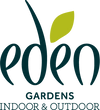Encouraging Bees – Why we all need to Create a Bee ‘n’ B in Our Gardens
Australian native bees and honey bees are both part of a backyard’s rich biodiversity. Something we should be mindful of (especially during September as its Biodiversity Month) is that are over 1700 species native to Australia alone. In NSW and Queensland we are lucky enough to have stingless Tetragonula and Austroplebeia, yellow and black carpenter, green carpenter, reed, blue banded, leafcutter, teddy bear, resin, Homalictus, and masked bees… that’s a lot of flowers getting pollinated!
If you want to encourage bees to your place, consider what bees like and need. Firstly bees need shelter. We have bee hotels for sale in our stores, which are a great start for solitary bees. Many bees are ground or mud nesting though, so some areas of dirt can also be useful. Others like old logs, so contact an arborist and see if you can get a few stumps for your garden. You can also make your own ‘hotel’ by using things like clusters of bamboo, lantana sticks, banksia pods and even extrusion bricks clustered together into a wall.
Water is one of the essentials for bees, but bees can also easily drown so providing a safe drinking bowl is vital. Put some pebbles into a bowl so bees can have a safe landing pad, or set up a trickling fountain where water drips over a ceramic pot.
Flowers of course are where all the action takes place as far as bees are concerned. Native plants like bottlebrush, grevilleas, native rosemary and tea trees are preference by native bees, but they also love some exotics like daisies, buddleia, lavender, rosemary, salvia and abelia, which are also favourites of the honeybee.
One of the most important things to prioritise if you want to have a healthy bee population is to be careful about your use of any pesticides or herbicides. Bees are particularly sensitive to poisoning, so avoid chemicals if possible and certainly never use them when bees are foraging. Remember some are system, meaning the active constituent is within the plantand travels to all parts including the flowers, which can then accidentally be transferred to bees when they are feeding. These are best avoided completely.
Lastly, if you can, try not to mow your grass in the middle of the day when bees might be feeding of flowers like clover. It is also kinder to your grass if you’re mowing in the cool or early evening than in the middle of the day.

